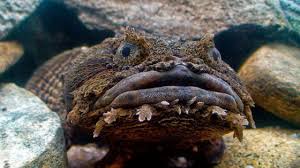With stiff competition to find that special someone, sometimes it may be necessary to be a little stealthy to beat out your opponents. Male oyster toadfish know this well, according to recent research by Allen F. Mesinger, which examined the use of grunts by male toadfish in order to interrupt the mating calls of competitors.

Many types of animals, such as birds and insects, use acoustic signaling to attract mates. In many of these populations, males adjust their timing so as to not overlap calls, but stealthy toadfish do just the opposite, preferring to interfere with the competitors’ mating calls with their own noises, in a process called “jamming”. The researchers tested the duration, frequencies, and timing of the male toadfish signaling, identifying two separate types, the boatwhistle and the grunt. The boatwhistle consists of a brief grunt, followed by a longer period of pulsing, and is used to attract females. Grunts, however, are shorter, and occur very infrequently spontaneously.
The results showed that 88% of the grunts recorded began and ended during the boatwhistle of another individual, indicating that these grunts were more likely to have been timed according to when the boatwhistles occurred, rather than generated randomly. Additionally, the grunts were consistently emitted during the tonal part of the competitor’s whistle whish has been demonstrated in previous research by Edds-Walton et al. to be the part of the call that attracts females most often. When this part of the call is interrupted, and the frequency digresses from the expected of that range of call, the female finds the call less attractive.
Although it is still unclear whether the grunt serves other purposes, this paper provided strong evidence that an important function is to interfere with the mating attempts of competing males, thus improving the chances of the grunt emitter of finding a mate. This provides a strong example of how sensory (!) cues are important factors in selecting for particular behaviors within a population.
Mesinger, Allen F. Disruptive communication: stealth communication in the oyster toadfish. The Journal of Experimental Biology 217, 344-350
